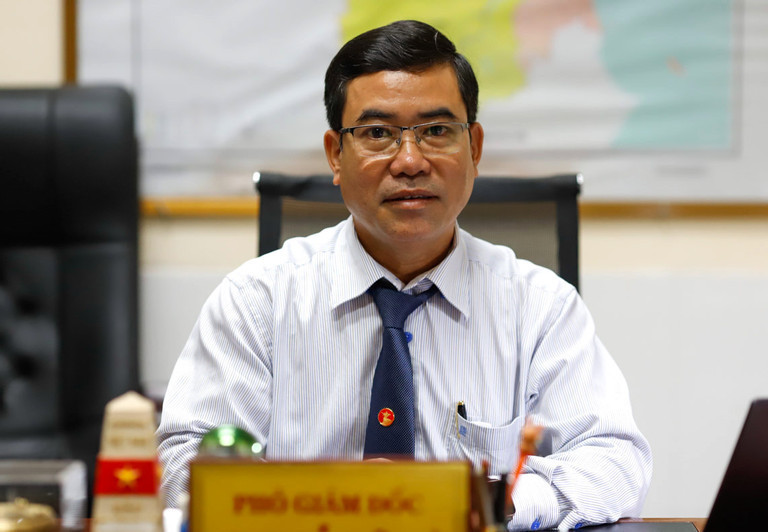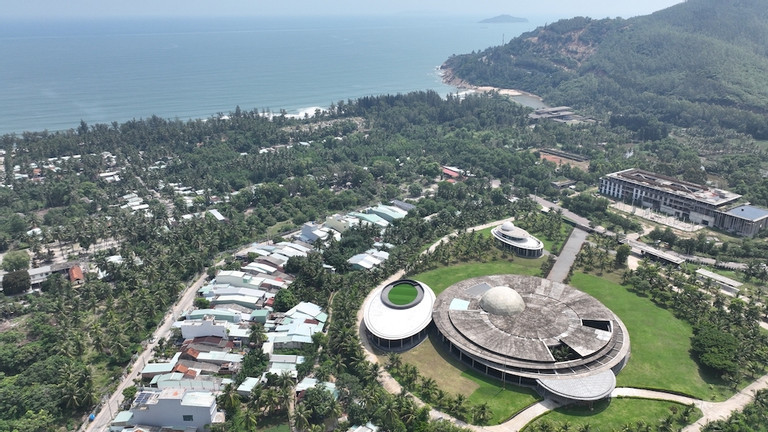Quy Nhon, renowned for its tourism, is also set to become a hallmark scientific city in Vietnam. The "Quy Hoa Science Urban Area Development Plan to 2025, Vision to 2035" has been established and is currently being implemented in Binh Dinh, with the goal of making Quy Nhon the first multifunctional urban area in the country.

Nguyen Huu Ha, Deputy Director in charge of the Binh Dinh Department of Science and Technology, shared that in 2013, the Interdisciplinary Center for Science and Education (ICISE) in Ghenh Rang, Quy Nhon, was inaugurated and began operations.
"Recognizing the significance and practical role of ICISE, during their visits and working sessions in Binh Dinh, leaders of the Party and State have endorsed the province's initiative to develop the 'Quy Hoa Science Urban Area to 2025, Vision to 2035.' This area will be a cornerstone in establishing Quy Nhon as a distinctive scientific city in Vietnam," said Ha.
Investing in science is considered an investment in breakthroughs, creating distinctiveness and paving the way for future generations. Therefore, Binh Dinh has proposed the establishment of the Quy Hoa Science Urban Area, the first of its kind in Vietnam, as a foundation for a future scientific city.
According to Ha, Quy Nhon possesses numerous advantages for scientific development that other regions find hard to match.
First, Quy Nhon has the vision and determination to build a scientific research and high-quality human resource training complex of international standards, centered around the initial core of ICISE.
Second, Quy Nhon attracts scientists in specialized fields such as space technology, theoretical particle physics, and toxicology.
In 2015, the project "Science Space Complex," including a planetarium, a science exploration center, and a public astronomical observatory, was approved for investment by the Government and the Ministry of Science and Technology. This is the first public science complex in Vietnam and the second in Southeast Asia, aiming to bring science closer to the public, particularly the youth, while also serving educational and scientific tourism purposes.
In 2016, ICISE established the Institute for Interdisciplinary Research in Science and Education (IFIRSE) to leverage the human resources from approximately 1,000 physicists attending annual conferences at ICISE. These are strong research groups of international caliber.
In 2017, at an international environmental conference held at ICISE, the Meeting Vietnam Association and the World Environmental Toxicology Association proposed establishing the Center for Environmental Toxicology Research and Ecological Risk Analysis in Quy Nhon. This proposal has received support from the Minister of Natural Resources and Environment of Vietnam and the People's Committee of Binh Dinh. Currently, the project has found an investor and is underway.

In the IT sector, since 2020, software companies like FPT Software and TMA Solutions have established their offices and software parks in the Quy Hoa area. About 100 experts and software engineers regularly work here. FPT is also building an AI center and auxiliary urban area in Tran Quang Dieu and Bui Thi Xuan wards.
Third, Quy Nhon is not only a destination for scientists and high-tech project investors but also a hub for training high-quality human resources for the South Central Coast region and the nation. It houses prominent research and experimental institutions, such as the South Central Coast Agricultural Science Institute, the Quy Nhon Institute of Malariology, Parasitology, and Entomology, the Central Livestock Research Center, and the Quy Hoa Leprosy and Dermatology Hospital.
Ha emphasized that continuing to leverage the roles of ICISE and IFIRSE with two core research groups—Theoretical Physics and Neutrino—will lay the foundation for an internationally renowned research center. Additionally, the Science Discovery Center and other research, science, and education centers being constructed in the area will significantly contribute to forming a national science and innovation hub located in Quy Nhon, Binh Dinh.
By positioning Quy Nhon as a science city, Binh Dinh hopes it will become a meeting place for top scientists from around the world to exchange and discuss research results and achievements. It aims to inspire and ignite a passion for scientific research among young generations in Vietnam and globally. The city also seeks to become the national AI center, a prime destination for AI investors, and a hub for fundamental and applied research, technology transfer, and high-quality human resource training. Additionally, it will support the development of a startup ecosystem, semiconductor production, and the commercialization of scientific research and technology development results.
Dieu Thuy